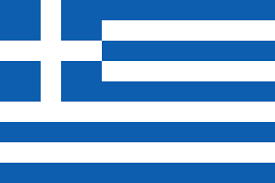Greece National Olympiad Problem 1
 On the plane are given
distinct lines , where
is integer and
is integer as well.Any three of these lines do not pass through the same point . Among these lines exactly
are parallel and all the other
lines intersect each other. All
lines define on the plane a partition of triangular , polygonic or not bounded regions. Two regions are called different, if they don't have common points or if they have common points only on their boundary. A region is called ''good'' if it is contained between two consecutive parallel lines .
On the plane are given
distinct lines , where
is integer and
is integer as well.Any three of these lines do not pass through the same point . Among these lines exactly
are parallel and all the other
lines intersect each other. All
lines define on the plane a partition of triangular , polygonic or not bounded regions. Two regions are called different, if they don't have common points or if they have common points only on their boundary. A region is called ''good'' if it is contained between two consecutive parallel lines .
If in a such given configuration the minimum number of ''good'' regions is and the maximum number of these regions is , find .This problem is part of this set .
The answer is 27.
This section requires Javascript.
You are seeing this because something didn't load right. We suggest you, (a) try
refreshing the page, (b) enabling javascript if it is disabled on your browser and,
finally, (c)
loading the
non-javascript version of this page
. We're sorry about the hassle.
Let's call the region between the k parallel lines the "Q". Fixing k and increasing n , the minimum of good regions is attained if all intersections between the n lines are outside Q. So f m i n = ( n + 1 ) ( k − 1 ) .
For the maximum, each of the n lines must intersect all the others inside Q. If the n -th line is added (not counting the k parallel lines), it is cut by the already existing lines into at most ( k + n − 2 ) segments lying inside Q which is thus the maximal number of good regions added. So f m a x = 2 ( k − 1 ) + ∑ i = 2 n ( k + i − 2 ) = n k + k + 2 n 2 − 3 n − 2 = f m i n + 2 n 2 − n . So we have 2 n 2 − n = 2 2 1 − 1 7 6 = 4 5 , thus n = 1 0 , hence k = 1 7 .